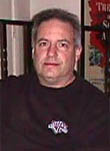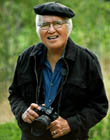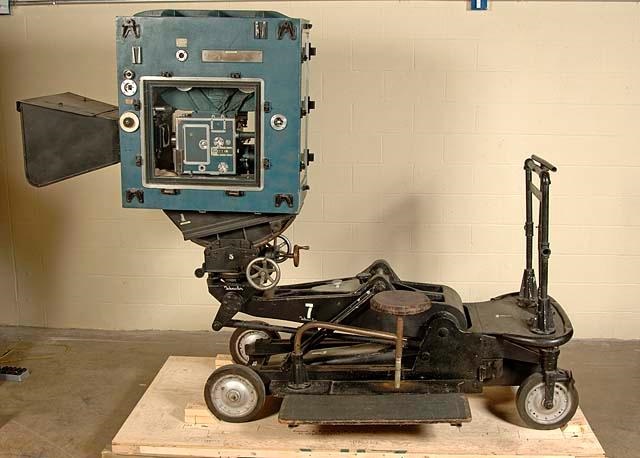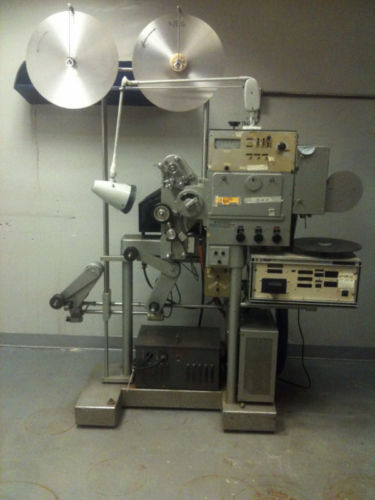|
|
 
|
|
Author
|
Topic: Interesting info on 3 strip Technicolor Processing!
|
Steve Matz
Jedi Master Film Handler
Posts: 672
From: Billings, Montana, USA
Registered: Sep 2003
|
 posted 08-09-2014 09:10 PM
posted 08-09-2014 09:10 PM




I have been meaning to post this for some time but never got around to it. This is a Reply from an Old School MP Processing Lab Technician and long time SMPTE Member that I was conferring with on 3 strip Technicolor and also asking about how much better a direct Print from the Camera Negative would be compared to a general theater release print...He really went into detail
but the info is both very interesting and informative...
FOR "WIZARD OF OZ" & "GONE WITH THE WIND"
STEVE:
Both those pictures were in Technicolor and aside
from the sepia opening to Wizard, Technicolor prints
were never from the camera negative. If there were
any fades or dissolves, the full scene was duped cut
to cut and put into the original negative. That meant
black and white master positive then shot to dupe
negative and that was spliced into the camera
negative. Technicolor would make a protection
master positive of the entire cut camera negative for
each color, yellow, magenta, cyan.
Then the camera negative would be used to make
the matrix for each color, a positive image in gelatin
relief. That was then dipped in the proper dye and
pressed on the "blank" stock which had the
previously printed black and white sound track. Each
color was pressed individually on a stainless steel
belt with registration pins. After the color had been
imbibed, the print was washed and sent back for the
next pass for the next color. The belt ran at 300 fpm
but making three passes reduced the output to 100
fpm just slightly more than projection speed.
The biggest problem Technicolor had was
registration and the toughest scene would be white
letters on a black background which would require
the highest degree of precision.
When Cinemascope broke out in 1953-54 Technicolor
was in big trouble since the prints weren't sharp
enough for the new screen size and were grainy.
Kalmus went to Messe at Kodak and threatened to
go to DuPont stock if Kodak couldn't work out the
problems (They had used some DuPont stock
manufactured to their specs with success earlier)
Kodak did and later Technicolor could make Scope
prints with Fox Hole Perfs and magstripe the prints
as well.
But prints shown to audiences on 1939 screens
weren't near the quality of the recent Warner Bros
new transfer from the original elements for both
Wizard and GWTW. I have seen clips from the original
1939 nitrate GWTW release at a SMPTE meeting back
in the 80s at MGM Cary Grant Theatre showing
variation in color, saturation of various releases and
difference between Tech and Eastman prints (Tech
holds better highlight detail, Eastman better shadow
detail).
One thing to remember, color--especially three strip
color--was rare in 1939 and would have been a treat
to any audience. GWTW was originally printed with
more subdued color compared to Oz and other Tech
releases. But every Tech release was "custom" back
then.
NITRATE FILM....Two things:
Nitrate had a number of attributes that had nothing to
do with the supposed "quality" of the image. The
stock itself would last longer and was more wear
resistant than the safety film stock that was
available at the time.
Nitrate produced "better" prints in part due to it's
shrinkage. The newly processed negative would
shrink to a point that it removed printer slip in a
contact printer. Up to this point negative and positive
film carried a .1870 pitch. Going to a safety film
required a new "short pitch" on film that would be on
the inner diameter of the printing sprocket of .1866.
As for safety film, the "slow burning film" was
introduced with 16mm for home use. There were
some 35mm projectors built for institutional use that
were designed for safety film and had sprockets that
added a round pin in between the 35mm sprocket
holes so that the machine couldn't run nitrate and
only the specially perforated 35mm safety film. The
definition of "safety film" or "slow burning" was a film
that would not support a flame once the source of
ignition (match) was removed. Still film and sheet film
in Speed Graflex cameras was also on nitrate base.
DuPont nitrate had a "curl" problem with sheet film.
This is why those blackmail negatives in 1940s
movies burst into flame when they're burned.
The reason that nitrate stayed on was there was no
desire in the industry to change to the new stock
which didn't last as long as the nitrate stock in
projection.
Many of the theatre "accidents" occurred once
safety film was introduced and projectionists
removed magazine doors, started smoking in booths
and generally were not as careful as during the
nitrate age. Then a children's matinee print would
come in and the projectionist wouldn't notice it was
nitrate and ..... You can only imagine what would
happen if a theater with a platter system had a
nitrate print running and something happened.
THEATER RELEASE PRINT COMPARED TO MASTER
NEGATIVE AND POSITIVE?
A color master positive couldn't be projected. It's on
a material like color negative which has colored
couplers that correct for cross talk with the color
dyes and therefore has an overall orange tint. They
can be used (and are) for telecine where the dye
mask can be corrected electronically. They are also
a flatter curve, i.e. lower gamma in B&W terms and
thus have a lower overall contrast...again something
that you can correct for in telecine.
GWTW was a 3-strip negative, however the 70mm
blow-up was done at MGM lab and also changed the
aspect ratio of the picture on that release to "wide
screen" or 2.21:1. In general, Technicolor would
make a protection master positive from the cut
negative (without light changes) and the cut negative
(with dupes) was timed and printed to the matrices
which were used to make the prints.
I knew once (having been through an entire evening
with GWTW at MGM at an SMPTE Meeting), but have
forgotten which element was used to make the
blow-up. There would have been a couple of ways to
go, considering the aspect ratio change the most
likely would have been the 35mm master positives to
a 65mm dupe negative and contact prints to 70mm
release prints. MGM Labs was one of two labs in
Hollywood that did 65mm and 70mm release printing.
(We also did 70mm release printing at Alpha Cine
when I was there). The other Hollywood lab was
Technicolor (although never IB prints).
So the comparison is really academic since you
could never see a color print directly from the
Technicolor 3 strip negatives (they were black and
white) so it would have to go through some process
unless you had lots of money and time and had a
color positive print exposed from each of the color
negatives on an optical printer. The system that
Warner Bros uses now is the closest to that system,
they use the individual negative or positive (as close
as they can get) to create a new digital master. The
various elements are combined on an aerial image
optical three head printer and instead of a film
camera, a digital scanner is used.
WRS (when it was still alive as a film lab) had a set-up
like that as well. There may be other set-ups like
that, I just don't know what CineTech is doing as part
of their restoration work right now.
It used to be all photo-chemical but people have
stopped restoring to film now days.
FWIW:
JAWS Eastman color negative, first generation
contact print would have been used for timing and
look better than any release print.
TEN COMMANDMENTS was three strip Technicolor.
BEN HUR was 65mm Eastman color negative at MGM
Labs, the contact first trial would be like looking at
picture postcards--incredible...
| IP: Logged
|
|
|
|
|
|
|
|
Monte L Fullmer
Film God

Posts: 8367
From: Nampa, Idaho, USA
Registered: Nov 2004
|
 posted 08-10-2014 12:39 AM
posted 08-10-2014 12:39 AM




New Line - Division of Warner Bros, in 1998, released "GWTW" for a limited run, printed on IB Technicolor with the image sqeezed 2:1 for anamorphic presentation so the image on the screen was the academy 1.37:1 playback.
Sound was Quad, but the silver soundtrack was hard for the DTS reader, the basement SRD readers to pick up, thus I had to present it in 05 Dolby SR optical.
In short, it was very impressive (and wonderful to see again), but sad in parts at the same time due to the shrinkage of the three nitrate negative strips causing sight color bleed, especially in the first reel.
-Monte
| IP: Logged
|
|
|
|
|
|
|
|
|
|
|
|
|
|
Mitchell Dvoskin
Phenomenal Film Handler

Posts: 1869
From: West Milford, NJ, USA
Registered: Jan 2001
|
 posted 08-11-2014 08:31 AM
posted 08-11-2014 08:31 AM




In 1997, Warner Brothers digitally restored re-released The Wizard Of Oz, striking both full 1.37 frame dye transfer (IB) Technicolor prints, and "windowboxed" 1.37 in a 1.85 frame Eastman color prints. Both looked good, but one of the complaints at the time was that the "windowboxed" prints wasted so much of the available frame.
In 1998, Warner Brothers re-release Gone With The Wind, dye-transfer (IB) Technicolor "windowboxed" 1.37 in an anamorphic frame, thus using more of the available frame space. Unfortunately, unlike Oz, the quality control was terrible on these prints, with focus and fringing issues that varied widely from print to print.
Back in 1976, MGM re-issued Gone With The Wind in anamorphic wide screen by cutting off the top and bottom of the 1.37 frame. The first home video LaserDisc of GWTW came out in Japan a few year before USA LaserDisc. This Japanese release was mastered (pan and scanned) from one of the 1976 prints, so the top/bottom/left/right sides were cut off. What were they thinking...
| IP: Logged
|
|
|
|
|
|
All times are Central (GMT -6:00)
|
|
Powered by Infopop Corporation
UBB.classicTM
6.3.1.2
The Film-Tech Forums are designed for various members related to the cinema industry to express their opinions, viewpoints and testimonials on various products, services and events based upon speculation, personal knowledge and factual information through use, therefore all views represented here allow no liability upon the publishers of this web site and the owners of said views assume no liability for any ill will resulting from these postings. The posts made here are for educational as well as entertainment purposes and as such anyone viewing this portion of the website must accept these views as statements of the author of that opinion
and agrees to release the authors from any and all liability.
|

 Home
Home
 Products
Products
 Store
Store
 Forum
Forum
 Warehouse
Warehouse
 Contact Us
Contact Us




 Printer-friendly view of this topic
Printer-friendly view of this topic
















